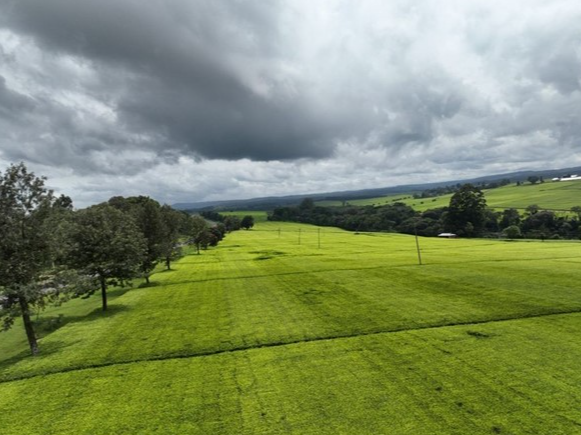
The tea sector continues to significantly contribute to the Kenyan economy through employment creation for sizeable population and increased export earnings. The total quantity of tea produced increased to 570.3 thousand tonnes in 2023 from 535.0 thousand tonnes in 2022.
According to the recently published export growth report, the total export volume in 2023 increased by 16% (72.58 million Kgs), rising from 450.33 million Kgs in 2022 to 522.92 million Kgs. Due to the increased export volume, a favourable exchange rate to the USD, and stable prices, export earnings from tea reached a record Kshs. 180.57 billion, up from Kshs. 138.09 billion the previous year. This represents a 31% increase in the value of exports (Kshs. 42.48 billion) and is the highest earnings ever recorded by the tea industry.
However, the product registered lower export unit prices in dollar terms, dropping to USD 2.47 per Kg from USD 2.62 in the previous year. Nevertheless, due to a favourable exchange rate of USD 139.85 compared to USD 117.87 the previous year, the unit price in Kenyan shillings was higher at Kshs. 345.32 compared to Kshs. 306.64 in the previous year.
Bulk tea exports remained the leading export model, with traditional markets standing out as the primary destinations. Pakistan maintained its position as the leading export destination for Kenyan tea, importing 209.59 million Kgs, a 15% increase compared to 181.98 million Kgs in 2022. This accounted for 40% of the total export volume, valued at Kshs. 75.22 billion.
In 2023, Kenyan tea was shipped to ninety-two (92) export destinations, compared to eighty-two (82) in 2022. Pakistan, as mentioned earlier, remained the leading importer, followed by Egypt with an import volume of 65.89 million Kgs worth Kshs. 22.05 billion. Other notable importers included the UK (46.14 million Kgs valued at Kshs. 14.67 billion), UAE (28.61 million Kgs valued at Kshs. 10.15 billion), Yemen (22.69 million Kgs valued at Kshs. 9.11 billion), Russia (18.34 million Kgs valued at Kshs. 5.25 billion), Iran (12.40 million Kgs valued at Kshs. 4.28 billion), Sudan (12.13 million Kgs valued at Kshs. 2.92 billion), Afghanistan (10.65 million Kgs valued at Kshs. 3.69 billion), and Poland (8.11 million Kgs valued at Kshs. 2.36 billion).
The top ten tea export destinations, including five traditional markets, accounted for 83.1% of Kenya’s total tea exports. Compared to 2022, more exports were recorded in traditional markets except for UAE, Russia, and Sudan, which faced market access challenges due to the Russia-Ukraine crisis and internal conflict in Sudan, respectively.
An encouraging aspect of the sector's performance was the increased demand for value-added teas from emerging markets such as South Sudan, Swaziland, Cameroon, Ethiopia, Congo DRC, Central African Republic, Senegal, Lebanon, Niger, Mauritania, Bahrain, Turkmenistan, Belarus, Guinea, Venezuela, El Salvador, and Benin. Chad, an emerging market for Kenyan value-added tea and a landlocked country, also recorded a significant increase in exports from Kenya.
Tea Production
Tea Sector Performance in Kenya’s Economic Growth 2023
The total output for 2023 was higher by 35.22 million Kgs (6.58%), reaching 570.26 million Kgs compared to 535.04 million Kgs in 2022. Notably, such a high crop yield of around 570 million Kgs was only previously realized in 2020. This increase has been attributed to continued favourable weather conditions between April and December 2023, during which "above-normal" mean rainfall was recorded in both rainfall seasons.
Besides the favourable weather conditions, the application of fertilizer through the Government fertilizer subsidy program to improve agricultural productivity also contributed, as did the licensing of additional processing factories in tea-growing areas with processing capacity potential, aimed at reducing post-harvest losses.
Tea Sales at the Auction and Local Markets
During 2023, the amount of Kenyan tea offered at the auction stood at 592.29 million Kgs, higher than the 506.47 million Kgs in 2022. However, the absorption rate for tea at the auction was lower, averaging 60% compared to 76% in the previous year and 84% in 2021. The most affected teas were from factories in the West of Rift for most grades and the BP1 grade across all factories, following low market penetration in the Russian and Iranian markets.
The average auction price for Kenyan tea in 2023 was lower at 2.24 USD per Kg, compared to 2.49 USD in 2022, but higher than 2.10 USD in 2021. Lower absorption and prices were attributable to the increased volume of lower-quality teas offered by the tea factories at the auction. However, the smallholder tea factories, whose quality categorization ranges from "good" to "best," fetched relatively higher prices, averaging 2.73 USD per Kg for the main grades, compared to 2.72 USD in 2022.
In 2023, cumulative sales in the local market were slightly higher at 37.3 million Kgs, compared to 36.50 million Kgs in 2022, but lower than 38.42 million Kgs in 2021. The sale of tea in the domestic market generated an additional Kshs. 16.4 billion.
